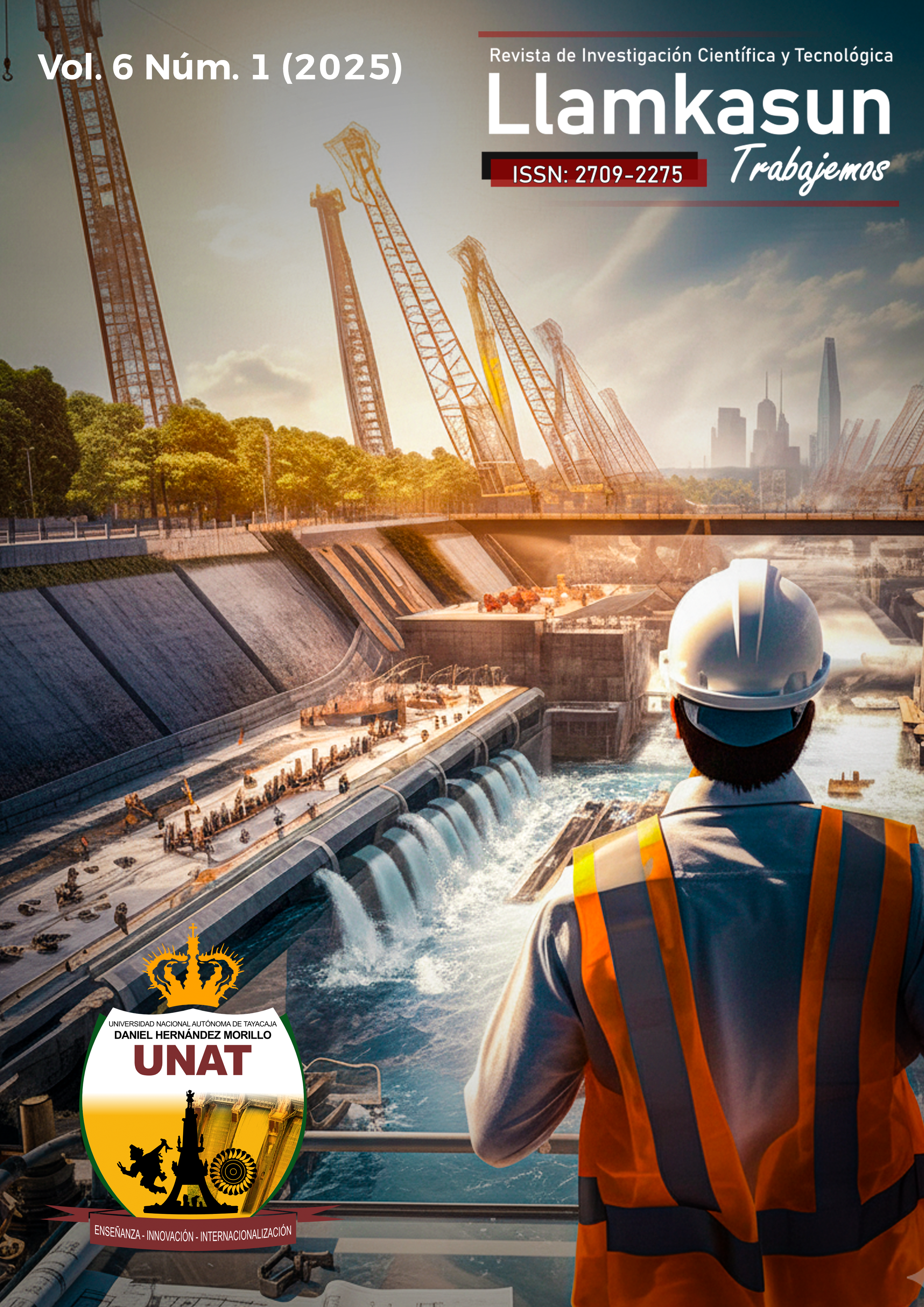Abstract
The aim of this research was to comparatively evaluate the structural response of a 21 m centrifugally reinforced concrete (C.A.C.) pole subjected to wind loads, applying the methodologies of ASCE 74 and CFE J6100-54 standards. The pole was modeled in SAP2000 v22 using both static and time-history dynamic analyses, considering service, maintenance, failure, and extreme wind load scenarios. Wind data were generated using the NOWS simulator for velicities up to 27.78 m/s. Results show a maximum displacement of 0.28 m under CFE and 0.20 m under ASCE, while maximum bending moments reached 145.92 kN.m and 133.47 kN.m, respectively.
Statistical validation using ANOVA revealed non-significant differences (Fcalc=2.17 < Fcrit=4.26; p=0.144 > 0.05), confirming the technical equivalence between the standards. It is concluded that ASCE 74 provides higher accuracy by incorporating gust response factors (GRF) up to 1.08, enhancing the design against transient loads. This research establishes a robust methodological framework to improve structural resilience and the safety of urban electrical infrastructure.
References
ASCE. (2020). ASCE Manual of Practice No. 74: Guidelines for Electrical Transmission Line Structural Loading (4th ed.). American Society of Civil Engineers.
Calderón, L., Rodríguez, R., & Meza, J. (2016). Análisis del viento en la bahía de Paracas para estructuras de transmisión eléctrica. Revista de Ingeniería Civil Peruana, 18(2), 115–124.
CFE. (2020). Norma Técnica J6100-54: Diseño estructural de líneas aéreas de transmisión. Comisión Federal de Electricidad, México.
Chay, M. T., Albermani, F., & Wilson, R. (2006). Numerical and analytical simulation of downburst wind loads. Engineering Structures, 28(2), 240–254. https://doi.org/10.1016/j.engstruct.2005.06.014
Chowdhury, A. G., Haan, F. L., Sarkar, P. P., & Kareem, A. (2009). A data-based model for simulating thunderstorm winds. Journal of Wind Engineering and Industrial Aerodynamics, 97(11-12), 537–547. https://doi.org/10.1016/j.jweia.2009.06.002
Fu, G., Huang, G., & Tamura, Y. (2020). Field measurement and analysis of typhoon-induced wind load effects on transmission lines. Journal of Wind Engineering and Industrial Aerodynamics, 205, 104319. https://doi.org/10.1016/j.jweia.2020.104319
Fu, G., Yan, B., & Cao, X. (2021). Gust response analysis of transmission towers under downburst loading using field data. Engineering Structures, 243, 112649. https://doi.org/10.1016/j.engstruct.2021.112649
Holmes, J. D., & Oliver, S. E. (2008). Design of transmission line structures under extreme wind events. Australian Journal of Structural Engineering, 8(1), 23–30.
Jairo, A., Rodríguez, F., & Palomino, C. (2021). Evaluación dinámica de postes eléctricos ante vientos extremos en zonas urbanas de Lima. Revista de Ingeniería Civil de la Universidad del Callao, 24(1), 55–68.
Letchford, C. W., & Chay, M. T. (2002). Pressure distributions on a cube in a simulated thunderstorm downburst. Journal of Wind Engineering and Industrial Aerodynamics, 90(8-9), 1017–1039. https://doi.org/10.1016/S0167-6105(02)00236-3
Martínez, R., Larios, M., & Pérez, J. (2021). Comportamiento estructural de postes de concreto armado centrifugado ante acciones de viento. Revista Mexicana de Ingeniería Estructural, 38(2), 78–95.
Méndez, E., Palacios, R., & Yauri, A. (2022). Simulación de cargas de viento en SAP2000 usando datos de NOWS para análisis estructural. Revista Científica de Ingeniería y Tecnología, 15(2), 139–150.
Ministerio de Vivienda, Construcción y Saneamiento (MVCS). (2021). Reglamento Nacional de Edificaciones – Norma E.020: Cargas. Lima, Perú.
NTP 339.027. (2010). Postes de concreto armado centrifugado – Requisitos y ensayos. Instituto Nacional de Calidad – INACAL.
Simiu, E., & Scanlan, R. H. (1996). Wind Effects on Structures: Fundamentals and Applications to Design (3rd ed.). Wiley-Interscience.
Valverde, R., Aguilar, F., & Gamarra, D. (2020). Análisis de vulnerabilidad de postes eléctricos en zonas de vientos extremos. Ingeniería y Ciencia, 10(1), 43–55.
Yan, B., Fu, G., & Wang, W. (2018). Performance evaluation of transmission lines exposed to strong winds using full-scale test and numerical modeling. Structure and Infrastructure Engineering, 14(12), 1559–1574. https://doi.org/10.1080/15732479.2018.1450510
Zhang, Y. (2006). Structural failure analysis of transmission line towers under wind loading. Wind and Structures, 9(1), 1–16.
Zhou, H., Gu, M., & Quan, Y. (2020). Dynamic analysis of transmission towers under spatially varying downburst winds. Engineering Structures, 206, 110137. https://doi.org/10.1016/j.engstruct.2020.110137
Zhou, Y., & Kareem, A. (2001). Gust loading factors for flexible structures. Journal of Structural Engineering, 127(2), 168–175. https://doi.org/10.1061/(ASCE)0733-9445(2001)127:2(168)
Zhu, L., & Chen, X. (2013). Wind-induced dynamic responses of a transmission tower-line system subjected to correlated downbursts. Engineering Structures, 49, 356–364. https://doi.org/10.1016/j.engstruct.2012.11.016
Zhu, L., Xu, Y. L., & Zhang, N. (2015). Field measurement and stochastic modeling of typhoon wind characteristics in coastal areas. Journal of Wind Engineering and Industrial Aerodynamics, 138, 78–91. https://doi.org/10.1016/j.jweia.2014.12.008.

This work is licensed under a Creative Commons Attribution 4.0 International License.
Copyright (c) 2025 Pablo Francisco Cielo Marina






